Complete 2025 buying guide with expert picks, fit tips, and everything you need for comfortable, confident hiking
Picture this: you’re three miles into what should be an amazing hike when your feet start screaming.
Your hiking shoes are pinching, sliding around, or worse—giving you hot spots that promise painful blisters.
Sound familiar? You’re not alone.
Poor footwear choice is the fastest way to turn an epic outdoor adventure into a miserable trudge back to the trailhead.
After two decades of hiking everything from gentle nature paths to technical alpine routes, and testing hundreds of pairs of hiking shoes and boots, I’ve learned that the right footwear isn’t just about comfort—it’s about confidence, safety, and actually enjoying your time outdoors.
In this requested OTL guide, you’ll discover exactly how to choose the best hiking shoes and boots for your specific needs, learn about the key features that separate good footwear from great, and get my expert picks for the top hiking shoes for women and men in 2025.
Whether you’re planning your first day hike or gearing up for a multi-day backpacking adventure, this guide will help you find your perfect trail companion.
Understanding Hiking Footwear: Types & When to Use Them
The hiking shoe market can feel overwhelming, but understanding the four main categories will instantly clarify your options.
Each type serves specific purposes and terrains—choosing the wrong one is often why hikers end up uncomfortable or injured.
Trail Runners: The Speed Demons
Trail runners are essentially athletic shoes designed for trails.
They’re the lightest option and increasingly popular among hikers who prioritize speed and agility.
Pros:
- Lightweight and flexible
- Excellent breathability
- Quick-drying
- No break-in period required
- Great for fast-and-light hiking
Cons:
- Minimal ankle support
- Less durability on rough terrain
- Limited waterproofing options
- Poor protection from rocks and roots
Best for: Well-maintained trails, day hikes under 15 miles, warm weather hiking, trail running, and experienced hikers who prefer minimal footwear.
I personally reach for trail runners on anything that’s considered “easy” to “moderate” difficulty.
Hiking Shoes (Low-Cut): The Versatile All-Rounders
Low-cut hiking shoes strike the perfect balance for most hikers.
They offer more support and protection than trail runners while remaining lighter and more flexible than boots.
Pros:
- Excellent versatility across terrain types
- Good balance of support and flexibility
- Moderate weight
- Available in waterproof versions
- Suitable for most day hiking
Cons:
- Less ankle support than boots
- May not handle heavy loads well
- Limited protection in extreme conditions
Best for: Day hiking on varied terrain, casual weekend warriors, first-time hiking shoe buyers, and anyone seeking one pair for multiple hiking styles.
This category represents about 70% of what most hikers actually need and ask us about.
Mid-Cut Hiking Boots: The Reliable Workhorses
Mid-cut boots extend above the ankle, providing crucial support for uneven terrain and heavier loads.
They’re the sweet spot for serious hikers.
Pros:
- Excellent ankle support and stability
- Superior protection from rocks and debris
- Handle heavier pack weights well
- Often fully waterproof
- Durable construction
Cons:
- Heavier than shoes or trail runners
- Less breathable
- Longer break-in period
- Can feel clunky on easy terrain
Best for: Backpacking trips, technical terrain, loose scree or talus, hiking with heavy packs (30+ lbs), and anyone prone to ankle injuries.
These are my go-to choice for anything involving overnight gear or challenging conditions.
Heavyweight Hiking Boots: The Bulletproof Tanks
Heavyweight boots are built for the most demanding conditions. They’re what mountaineers and serious backpackers rely on when failure isn’t an option.
Pros:
- Maximum support and protection
- Exceptional durability
- Handle extreme conditions
- Compatible with crampons (some models)
- Long-lasting investment
Cons:
- Heavy and tiring for day hikes
- Expensive
- Long break-in period required
- Overkill for most hiking
Best for: Multi-day backpacking, off-trail hiking, mountaineering, cold weather conditions, and carrying very heavy loads (40+ lbs).
Unless you’re regularly tackling serious alpine terrain or squatching, you probably don’t need these.
Key Features of the Best Hiking Shoes: What Really Matters
Understanding the technical aspects of hiking shoes will help you make informed decisions and avoid marketing hype.
Here’s what actually impacts your hiking experience.
Outsole & Traction: Your Connection to the Trail
The outsole is where rubber meets rock, and it’s arguably the most critical component for safety and performance.
Lug patterns determine how your shoe grips different surfaces.
Deeper, more aggressive lugs excel on soft terrain like mud and loose dirt, while shallower patterns work better on hard surfaces like rock slabs.
Look for multidirectional lug patterns that provide grip both uphill and downhill.
Rubber compounds make a huge difference. Vibram outsoles are the gold standard, with specific compounds optimized for different conditions.
Their Megagrip compound, for example, excels on wet rock, while their XS Trek compound balances durability with grip.
I’ve tested shoes on everything from polished granite to muddy Michigan creek crossings, and the difference between good and great traction becomes obvious when conditions get challenging.
Don’t compromise here—it’s literally what keeps you upright.
Midsole & Cushioning: The Comfort Engine
The midsole sits between your foot and the outsole, providing cushioning and support. This is where hiking comfort is won or lost.
EVA (Ethylene-vinyl acetate) foam is lightweight and responsive but compresses over time.
PU (Polyurethane) foam is denser and more durable but heavier.
Many modern shoes use dual-density midsoles that combine both materials strategically.
Some hiking shoes include rock plates—thin, flexible barriers that protect your feet from sharp rocks and roots.
They’re essential for technical terrain but add weight and reduce ground feel.
The key is finding the right balance for your hiking style.
Day hikers often prefer softer, more cushioned midsoles, while backpackers need firmer support for heavy loads.
Upper Materials: The Protection Envelope
The upper protects your feet and determines breathability, durability, and weight.
Full-grain leather is incredibly durable and provides excellent protection but is heavy and takes time to break in.
Nubuck leather offers a good compromise—easier to break in while maintaining durability.
Synthetic materials are lighter, break in faster, and dry quickly. They’re often combined with mesh panels for breathability.
However, they typically don’t last as long as leather.
Waterproof membranes like Gore-Tex, eVent, or proprietary systems keep water out but reduce breathability.
The trade-off is real—waterproof shoes will be warmer and less comfortable in hot, dry conditions.
Fit & Sizing: The Make-or-Break Factor
Proper fit is more important than any brand or feature. I’ve seen hikers suffer through entire trips because they prioritized looks or price over fit.
Your hiking shoes should have thumb-width space between your longest toe and the shoe’s front. Your feet swell during long hikes, and you need room for thick hiking socks.
Heel lock is crucial—your heel shouldn’t slip when walking downhill. A properly fitted shoe will hold your heel securely without pressure points.
Width matters more than most people realize. Many hiking shoe problems stem from width issues rather than length.
If you have wide feet, seek out brands known for accommodating different widths.
Always try on hiking shoes in the afternoon when your feet are naturally swollen, and wear the socks you plan to hike in.
Walk on inclines if the store allows it—this reveals fit issues that flat ground won’t.
Waterproofing vs. Breathability: The Eternal Trade-off
This is one of the most debated topics in hiking footwear, and for good reason—there’s no perfect solution.
Waterproof shoes with membranes like Gore-Tex will keep water out but trap moisture from sweat inside.
They’re essential for wet climates or stream crossings but can become uncomfortable in hot weather.
Non-waterproof shoes breathe better and dry faster when they do get wet, but they offer no protection against puddles, streams, or heavy rain.
My recommendation? Consider your typical hiking conditions. If you regularly encounter water or hike in wet climates, waterproof shoes are worth the trade-off.
If you hike primarily in dry conditions, prioritize breathability.
Expert Picks: Top Hiking Shoes for 2025
After extensive testing and thousands of trail miles, these are the hiking shoes I recommend for different hiking styles and needs.
Each has earned its place through real-world performance, not just marketing claims.
Best Overall Hiking Shoe: Salomon Quest 4 GTX
The Salomon Quest 4 GTX represents the pinnacle of hiking shoe design. It’s the shoe I reach for when conditions are unknown or challenging.
Why it’s our top pick: This shoe does everything well without major compromises.
The Gore-Tex membrane provides reliable waterproofing, the Contagrip outsole grips everything from wet rock to loose scree, and the 4D Advanced Chassis provides excellent stability without feeling rigid.
Ideal for: Intermediate to advanced hikers tackling varied terrain, backpackers carrying moderate loads, and anyone wanting one shoe that handles most conditions.
Pros:
- Exceptional all-around performance
- Durable construction that lasts seasons
- Excellent traction on technical terrain
- Comfortable even on long days
- Proven reliability in harsh conditions
Cons:
- Premium price point
- Overkill for easy trail walking
- Limited color options
Expert Insight: I’ve put over 500 miles on my current pair, including scrambles in the Rockies and muddy Pacific Northwest trails.
The Contagrip sole still grips like new, and the upper shows minimal wear despite some serious abuse.
- The stable & supportive backpacking shoe that delivers a smooth ride
- Smooth ride
- Enhanced support
Best Lightweight Trail Runner: Altra Lone Peak 7
The Altra Lone Peak 7 continues Altra’s tradition of creating trail runners that actually work for hiking, not just running.
Why it’s exceptional: The zero-drop platform and FootShape toe box allow natural foot movement, while the MaxTrac outsole provides surprising grip for such a light shoe.
Ideal for: Fast-and-light hikers, trail runners who occasionally hike, and anyone with foot problems that benefit from zero-drop geometry.
Pros:
- Incredibly comfortable for long distances
- Excellent drainage and quick-dry
- Roomy toe box accommodates foot swelling
- No break-in period required
- Great value for the performance
Cons:
- Minimal ankle support
- Durability concerns on sharp rock
- Zero-drop may require adjustment period
Expert Insight: These have become my default choice for anything under 20 miles on established trails.
The comfort level is remarkable—I’ve hiked 25+ mile days without foot fatigue.
- FOOTSHAPE: Our signature FootShape comfort gives your feet more space to sit naturally and is designed to address biolog…
- ALTRA EGO: Our original Altra EGO foam is designed to harmonize the balance between responsiveness and comfort.
- BALANCED CUSHIONING: Our Balanced Cushioning platform positions your heel and forefoot at an equal distance from the gro…
Best Waterproof Hiking Shoe: Merrell Moab 3 Mid Waterproof
The Merrell Moab 3 Mid improves on the legendary Moab formula with better materials and construction while maintaining the comfort that made the original famous.
Why it works: Sometimes the best choice is the proven choice. The Moab series has equipped millions of hikers successfully, and the version 3 addresses previous weaknesses while keeping the strengths.
Ideal for: Beginning hikers, casual weekend adventurers, and anyone prioritizing comfort and value over cutting-edge performance.
Pros:
- Proven track record of reliability
- Excellent comfort out of the box
- Wide availability and sizing options
- Reasonable price point
- Good all-around performance
Cons:
- Not the most durable option
- Performance lags behind premium models
- Limited technical terrain capability
Expert Insight: I recommend these to new hikers more than any other shoe.
They’re forgiving, comfortable, and build confidence without breaking the bank.
Perfect for building your hiking legs.
- GORE-TEX waterproof membrane, exceptional breathability and waterproof performance
- Pigskin leather and mesh upper
- 100% recycled laces, webbing and mesh lining
Best for Wide Feet: Keen Targhee III Mid WP
The Keen Targhee III Mid addresses the often-overlooked needs of hikers with wide feet, providing roominess without sacrificing performance.
Why wide-foot hikers love it: Keen’s generous toe box and overall roominess accommodate foot swelling and wider feet without pressure points.
Ideal for: Hikers with wide feet, those prone to hot spots, and anyone who has struggled with narrow-fitting hiking shoes.
Pros:
- Exceptionally roomy fit
- Excellent build quality
- Good traction on varied terrain
- Waterproof and breathable
- Protective toe bumper
Cons:
- May feel loose for narrow feet
- Heavier than some alternatives
- Limited style options
Expert Insight: If you’ve struggled with cramped toes or pressure points in other hiking shoes, try these.
The roominess is immediately noticeable and can transform your hiking experience.
- WATERPROOF & PROTECTION: KEEN.DRY breathable membrane keeps feet dry and comfortable by allowing vapor out without letti…
- MATERIAL & CONSCIOUSLY CREATED: Durable premium leather and breathable performance mesh; Quick dry lining for active use…
- TRACTION: KEEN ALL-TERRAIN rubber provides high traction grip in muddy environments and on rocky surfaces; 4mm multi dir…
Best Technical Terrain Boot: La Sportiva Ultra Raptor II Mid GTX
The La Sportiva Ultra Raptor II Mid brings mountain boot performance to a hiking boot package, excelling where others struggle and ranking among the best hiking boots for technical applications.
Why it excels on technical terrain: La Sportiva’s climbing heritage shows in this boot’s ability to grip rock and handle precise footwork that would challenge other hiking footwear.
Ideal for: Experienced hikers tackling technical terrain, scrambling enthusiasts, and anyone whose trails involve significant rock work.
Pros:
- Exceptional rock grip and precision
- Durable construction built for abuse
- Excellent support for technical moves
- European quality and attention to detail
- Performs well with heavy packs
Cons:
- Stiffer feel than casual hikers prefer
- Longer break-in period
- Premium pricing
- Limited availability in some areas
Expert Insight: These are my choice for anything involving Class 2 scrambling or loose rock.
The precision and confidence they provide on technical terrain is unmatched among hiking boots.
- LIGHT & FAST HIKER: Made for hikers who want a boot that is protective and supports light to medium loads with a light a…
- GORE-TEX WATERPROOF PROTECTION: Keep your feet dry with Gore Tex waterproof and breathable lining. Microfiber mud guard …
- SIZING & FIT: Runs Small. Normal or Large Feet – buy 1 SIZE UP. Small feet – buy 1/2 Size Up. Available in both Regular(…
Best Men’s Hiking Boot: Salomon Men’s Quest 4 GTX
The Salomon Quest 4 GTX for men mirrors the exceptional performance of the women’s version, consistently ranking among the best hiking boots for serious male hikers.
Why it’s exceptional: This boot represents the perfect balance of support, comfort, and technical performance that serious hikers demand.
Ideal for: Male hikers tackling varied terrain, backpackers carrying moderate to heavy loads, anyone wanting premium hiking boot performance.
Key Features:
- 4D Advanced Chassis for stability without bulk
- Contagrip outsole with proven traction
- Gore-Tex waterproof protection
- Nubuck leather durability
- All-day comfort design
Expert Insight: After 500+ miles in these boots across diverse terrain, they remain my top recommendation for men seeking the best hiking boots for serious adventures.
Best Budget-Friendly Option: Columbia Redmond III Mid Waterproof
The Columbia Redmond III Mid proves that you don’t need to spend a fortune to get capable hiking shoes.
Why it’s a great value: Columbia delivers essential hiking shoe features at an accessible price point without major compromises in quality.
Ideal for: Budget-conscious hikers, beginners testing their interest in hiking, and anyone needing backup shoes for occasional use.
Pros:
- Excellent value proposition
- Solid basic performance
- Wide availability
- Comfortable for casual hiking
- Includes essential waterproofing
Cons:
- Materials not as premium as expensive options
- Limited durability under heavy use
- Performance compromises in challenging conditions
Expert Insight: These are perfect for getting started in hiking without a major investment.
While they won’t match premium shoes in demanding conditions, they’ll serve most recreational hikers well.
- ADVANCED TECHNOLOGY: The Redmond III Mid Waterproof Boot features our Omni-Tech membrane bootie with seam-sealed constru…
- DURABLE HIKING BOOT: The perfect combination of high function and performance designed into a mid-cut boot. This versati…
- ALL TERRAIN TRACTION: Our signature Omni-Grip non-marking traction rubber outsole provides sure-footed grip across a wid…
Best Hiking Shoes for Women: Top Picks for Every Adventure
Women’s hiking shoes have unique design considerations including narrower heels, different arch shapes, and specific fit requirements.
These picks represent the best options for female hikers across different needs and budgets, with proven performance on real trails.
Best Overall Women’s Hiking Shoe: Merrell Women’s Moab 3 Mid Waterproof
⭐ 4.6/5 stars (10,500+ reviews) | Top seller – 1,000+ bought this month
The Merrell Moab 3 Mid has earned its reputation as the most trusted women’s hiking shoe through years of reliable performance.
This updated version addresses previous comfort complaints while maintaining the durability that made the original legendary.
Why women love it: The Moab 3 fits the female foot shape better than most hiking shoes, with a narrower heel and roomier forefoot.
The mid-cut design provides ankle support without the bulk of full boots.
Ideal for: Beginning to intermediate female hikers, day hiking on varied terrain, women seeking proven reliability over cutting-edge features.
Key Features:
- Vibram TC5+ outsole for reliable traction on multiple surfaces
- Waterproof membrane keeps feet dry in streams and wet conditions
- Kinetic Fit BASE insole provides arch support and heel cushioning
- Bellows tongue keeps debris out
- Protective rubber toe cap for durability
Pros:
- Excellent comfort straight out of the box
- Wide range of sizes and widths available
- Proven track record with thousands of satisfied customers
- Reasonable price point for the quality
- Good all-terrain performance
Cons:
- Not the most technical option for serious scrambling
- Durability can vary with heavy use
- Some find the styling dated
Expert Insight: I’ve recommended these to more women than any other hiking shoe, and the feedback is consistently positive.
They’re particularly excellent for women transitioning from casual walking to serious hiking—forgiving, comfortable, and confidence-building.
- Waterproof membrane seals out water and lets moisture escape
- Pig suede leather and breathable mesh upper
- Kinetic Fit ADVANCED removable contoured footbed with reinforced heel cushioning for medium support
Best Lightweight Women’s Trail Runner: NORTIV 8 Women’s Hiking Shoes
⭐ 4.2/5 stars (1,700+ reviews) | Popular choice – 200+ bought this month
The NORTIV 8 Women’s Hiking Shoes offer impressive performance at a budget-friendly price point, making them perfect for women testing their interest in hiking or needing a lightweight option for easy trails.
Why they’re gaining popularity: These shoes punch above their price class with features typically found in more expensive models, plus they’re specifically designed for the female foot shape.
Ideal for: Budget-conscious hikers, beginners, women wanting backup shoes, casual trail walking, travel hiking.
Key Features:
- Quick-lace system for easy on/off and secure fit
- Breathable mesh upper prevents overheating
- Anti-slip rubber sole with decent traction
- Lightweight construction reduces fatigue
- Padded collar and tongue for comfort
Pros:
- Exceptional value for money
- Very lightweight and comfortable
- No break-in period required
- Available in multiple color options
- Quick-drying materials
Cons:
- Limited durability on rough terrain
- Minimal ankle support
- Not suitable for technical hiking
- Traction struggles on wet surfaces
Expert Insight: While these won’t replace premium hiking shoes for serious adventures, they’re perfect for women getting into hiking or needing an affordable option for casual trails.
The comfort level is surprisingly good for the price point.
- Lightweight 9.7oz Women’s Hiking Shoes: Weighing just 9.7 ounces, these shoes dramatically reduce fatigue during long tr…
- Oxford Cloth Seamless TPU Upper: Featuring a durable Oxford cloth upper with reinforced TPU overlays, these hiking sneak…
- Cord Lacing System for Fast, Secure Fit: The innovative cord lacing on these women’s boots ensures quick adjustments and…
Best Women’s Waterproof Budget Option: ANJOUFEMME Women’s Hiking Shoes
⭐ 4.2/5 stars (650+ reviews) | Rising popularity – 100+ bought this month
The ANJOUFEMME Women’s Hiking Shoes fill a specific niche for women needing waterproof protection without premium pricing.
They’re particularly popular among women who hike in wet climates or muddy conditions.
Why they stand out: These shoes prioritize practical waterproofing and traction over advanced features, making them ideal for specific conditions and work applications.
Ideal for: Wet climate hiking, muddy trail conditions, women in outdoor work environments, those prioritizing waterproofing on a budget.
Key Features:
- Fully waterproof construction keeps feet dry
- Slip-resistant outsole designed for wet surfaces
- Lightweight synthetic materials dry quickly
- Reinforced toe and heel for durability
- Cushioned midsole for basic comfort
Pros:
- Excellent waterproof performance for the price
- Good grip on slippery surfaces
- Lightweight despite waterproof construction
- Suitable for work and hiking
- Easy to clean and maintain
Cons:
- Limited breathability due to waterproof design
- Basic cushioning may not suit long hikes
- Styling is more utilitarian than fashionable
- Durability questions for serious hiking
Expert Insight: These are purpose-built for wet conditions rather than all-around hiking performance.
If you regularly deal with streams, mud, or wet weather, they’re a solid budget choice, but look elsewhere for dry climate hiking.
Best Women’s Wide-Width Option: Keen Women’s Targhee III Waterproof
⭐ 4.4/5 stars (3,200+ reviews) | Wide-foot favorite
The Keen Targhee III addresses the often-overlooked needs of women with wider feet, providing roominess without sacrificing hiking performance.
Why wide-foot women choose these: Keen’s generous toe box and overall roomy fit accommodate foot swelling and wider feet without the pressure points that plague many women’s hiking shoes.
Ideal for: Women with wide feet, those prone to foot swelling, hikers who’ve struggled with narrow-fitting shoes, casual to moderate hiking.
Key Features:
- Roomy toe box prevents cramped toes
- KEEN.DRY waterproof membrane keeps feet dry
- All-terrain rubber outsole with 4mm lugs
- Removable footbed for custom orthotics
- Protective rubber toe bumper
Pros:
- Exceptional roominess for wide feet
- Reliable waterproof protection
- Good build quality and durability
- Accommodates custom insoles
- Comfortable for all-day wear
Cons:
- May feel loose for narrow feet
- Heavier than lightweight alternatives
- Break-in period required
- Higher price point
Expert Insight: If you’ve struggled with toe pinching or pressure points in other women’s hiking shoes, these could be game-changers.
The difference in comfort is immediately noticeable for women who need the extra room.
🔗 Check Current Price on Amazon
Best Hiking Boots for Women: Premium Protection & Support
For female hikers who need maximum ankle support and protection, hiking boots for women offer superior performance on challenging terrain.
These mid-cut and high-cut options provide the stability and durability serious female adventurers demand.
Best Overall Women’s Hiking Boot: Salomon Women’s Quest 4 GTX
⭐ 4.7/5 stars (1,200+ reviews) | Premium choice for serious female hikers
The Salomon Quest 4 GTX represents the pinnacle of women’s hiking boot design, offering technical performance without sacrificing comfort.
This boot handles everything from day hikes to multi-day backpacking with confidence.
Why it’s the best women’s hiking boot: Salomon designed this specifically for female foot anatomy with a women-specific last, narrower heel, and strategic padding placement.
The result is a boot that fits like it was custom-made.
Ideal for: Serious female hikers, backpacking trips, technical terrain, ankle injury prevention, year-round hiking.
Key Features:
- 4D Advanced Chassis provides stability without stiffness
- Contagrip outsole with aggressive lugs for superior traction
- Gore-Tex waterproof membrane keeps feet dry
- Women-specific fit with narrower heel and contoured shape
- Durable nubuck leather and textile upper
Pros:
- Exceptional ankle support and stability
- Outstanding durability for long-term use
- Excellent traction on all terrain types
- Comfortable even on 20+ mile days
- Weather-resistant construction
Cons:
- Premium price point
- Heavier than hiking shoes
- Requires break-in period
- May be overkill for casual hiking
Expert Insight: These are my top recommendation for women who’ve graduated beyond casual hiking.
The ankle support is remarkable without feeling restrictive, and the durability means they’ll last for years of serious adventures.
- The stable & supportive backpacking shoe that delivers a smooth ride
- Smooth ride
- Enhanced support
Best Budget Women’s Hiking Boot: Columbia Women’s Newton Ridge Plus Waterproof
⭐ 4.3/5 stars (8,900+ reviews) | Best value – 500+ bought this month
The Columbia Newton Ridge Plus proves that hiking boots for women don’t have to break the bank.
This boot delivers essential features at an accessible price point.
Why budget-conscious women choose it: Columbia packed surprising quality into an affordable package, making serious hiking accessible to more women.
Ideal for: Beginning female hikers, budget-conscious adventurers, casual weekend hiking, women testing their interest in hiking boots.
Key Features:
- Waterproof seam-sealed construction
- Omni-Grip non-marking traction rubber
- Lightweight techlite midsole
- Durable leather and mesh upper
- Metal hardware for durability
Pros:
- Excellent value for money
- Reliable waterproof protection
- Comfortable for most foot shapes
- Wide size availability
- Good basic performance
Cons:
- Limited advanced features
- Not ideal for technical terrain
- Durability concerns with heavy use
- Basic traction compared to premium boots
Expert Insight: Perfect for women wanting to try hiking boots without major investment.
While they won’t match premium boots in demanding conditions, they’re excellent for building confidence and experience.
- ADVANCED TECHNOLOGY: Columbia Women’s Newton Ridge Plus Waterproof Hiking Boot features our lightweight, durable midsole…
- HANDY FEATURES: Treacherous days out on the trail are comfortable and worry-free with this boot’s waterproof full-grain …
- ADJUSTABLE FEATURES: The Newton Ridge Plus Waterproof Hiking Boot features a lace-up closure for an adjustable, secure f…
Women’s Hiking Shoe Fit Guide: Getting It Right
Women’s feet have specific characteristics that affect hiking shoe fit, and understanding these differences is crucial for comfort and performance.
Key Fit Considerations for Women:
Heel Shape: Women typically have narrower heels relative to forefoot width. Look for shoes designed specifically for women rather than scaled-down men’s models.
Arch Differences: Women often have higher arches and may need more arch support.
Consider shoes with removable insoles if you use custom orthotics.
Volume Needs: Women’s feet often have lower volume (less thickness) than men’s.
Shoes designed for women account for this with appropriate padding placement.
Sizing Tips:
- Always try on both feet—most people have slight size differences
- Shop in the afternoon when feet are naturally swollen
- Bring hiking socks for accurate fit testing
- Walk on inclines if possible to test downhill toe sliding
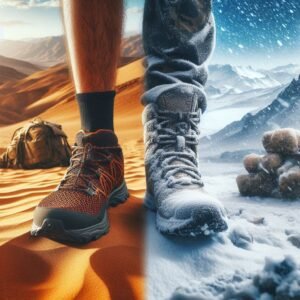
Tips for Choosing Your Perfect Pair
Selecting hiking shoes is as much art as science. These practical tips will help you make the right choice and avoid common pitfalls.
Try Before You Buy: The Non-Negotiable Rule
Never buy hiking shoes without trying them on. Online shopping is convenient, but feet are too individual for guesswork.
Even within the same brand, different models fit differently.
Visit the store in the late afternoon or evening when your feet are naturally swollen—this mimics how they’ll feel during long hikes.
Bring the socks you plan to hike in because thickness affects fit significantly.
Test on inclines if possible. Many stores have ramps that simulate uphill and downhill walking.
This reveals whether your heel slips or your toes jam forward—both major comfort killers on actual trails.
Walk around for at least 10-15 minutes. Hot spots and pressure points often don’t appear immediately.
If the store allows it, walk outside on different surfaces.
Consider Your Terrain & Conditions
Match your shoes to your adventures. A shoe that’s perfect for groomed nature trails will be miserable on rocky scrambles, and technical footwear is overkill for casual walks.
Terrain considerations:
- Well-maintained trails: Trail runners or light hiking shoes
- Rocky, uneven terrain: Mid-cut boots with good ankle support
- Muddy, slippery conditions: Aggressive tread patterns
- Stream crossings: Quick-drying materials or waterproof membranes
- Multi-day trips: Durability and support become crucial
Climate matters too. Waterproof shoes are essential in wet climates but can be uncomfortable in hot, dry conditions.
Consider seasonal variations if you hike year-round!
Match Shoes to Pack Weight
Your footwear needs scale with your pack weight.
Day hiking with a light pack requires different support than backpacking with camping gear.
General guidelines:
- Under 20 lbs: Trail runners or light hiking shoes work well
- 20-35 lbs: Mid-cut hiking shoes provide better support
- 35+ lbs: Consider hiking boots for maximum support
- 50+ lbs (mountaineering/winter): Heavyweight boots are essential
This isn’t a hard rule—personal preference and experience matter.
Some ultralight backpackers hike hundreds of miles in trail runners, while others prefer boots for day hikes.
Start conservative and adjust based on experience.
Don’t Forget About Socks
Socks are part of your footwear system. Great hiking shoes with poor socks create blisters and discomfort.
Invest in quality merino wool or synthetic hiking socks that wick moisture and provide cushioning.
Avoid cotton socks for hiking—they retain moisture and lose insulation when wet.
Choose socks with cushioning in heel and forefoot areas where you need it most.
Consider sock thickness when trying on shoes.
Thick socks require slightly larger shoes, and seasonal changes in sock choice can affect fit.
- Breathable Merino Wool: Made from a moisture-wicking Merino wool blend for comfort and Polyamide for durability. Our bre…
- Anti-Blister Cushioning: These crew length socks feature targeted cushioning to help prevent blisters. Arch support impr…
- Ideal for Mild to Cold Climates: Our boot socks are tested and developed with professional mountaineers to ensure the hi…
Break Them In Properly
All hiking shoes benefit from a break-in period, even those marketed as “ready to wear.”
This process allows materials to conform to your feet and reveals any fit issues before they ruin a hike.
Progressive break-in approach:
- Wear indoors for short periods initially
- Take short walks around the neighborhood
- Graduate to easy day hikes with familiar terrain
- Build up to longer adventures as comfort improves
Leather shoes require more break-in time than synthetic options. Budget several weeks for full-grain leather boots but only days for synthetic trail runners.
Pay attention to hot spots during break-in. Some minor discomfort is normal, but persistent pressure points or pain indicates fit problems that won’t resolve with time.
Maintenance & Care for Longevity
Proper care extends shoe life significantly. Trail conditions are hard on footwear, but basic maintenance keeps shoes performing longer.
After each hike:
- Remove debris from treads
- Rinse off mud and dirt
- Allow to air dry completely before storage
Regular maintenance:
- Clean with appropriate cleaners for the material
- Apply DWR (Durable Water Repellent) treatment to refresh water resistance
- Check for wear patterns that indicate fit issues
- Replace insoles when they compress permanently
Storage matters too. Keep shoes in a cool, dry place away from direct sunlight.
Cedar shoe trees help maintain shape for leather shoes.
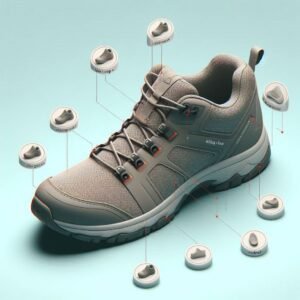
Hiking Shoes & Boots FAQ
What’s the difference between hiking shoes and hiking boots?
Height is the primary difference. Hiking shoes are low-cut (below the ankle), while hiking boots extend above the ankle. This affects ankle support, weight, and protection.
Hiking shoes are lighter, more flexible, and better for day hiking on moderate terrain.
Hiking boots provide more ankle support and protection, making them better for technical terrain, heavy packs, and multi-day trips.
The choice depends on your hiking style and needs. Many hikers find shoes sufficient for most activities, while others prefer the security of boots for challenging terrain.
Do I need waterproof hiking shoes?
It depends on your typical hiking conditions. Waterproof shoes are essential if you regularly encounter:
- Stream crossings
- Wet, muddy trails
- Rain or snow
- Morning dew on vegetation
However, waterproof shoes have drawbacks:
- Reduced breathability
- Slower drying when water gets inside
- Higher cost
- Potential for overheating in hot weather
For dry climate hiking, non-waterproof shoes often provide better comfort through superior breathability.
They also dry faster if they do get wet.
How long do hiking shoes last?
Typical lifespan ranges from 500-1000 miles, depending on:
- Construction quality
- Terrain difficulty
- Hiker weight and gait
- Maintenance quality
- Usage frequency
Signs it’s time to replace:
- Worn tread that no longer grips
- Compressed midsole that doesn’t provide cushioning
- Upper damage that affects fit or protection
- Sole separation from upper
Premium shoes often last longer than budget options, making them better value despite higher initial cost.
Rotating between multiple pairs can extend the life of each.
Can I use trail runners for backpacking?
Yes, with caveats. Many experienced backpackers prefer trail runners for their comfort and speed.
Please consider:
Trail runners work for backpacking when:
- Pack weight is moderate (under 30 lbs)
- Terrain is well-maintained
- Weather conditions are favorable
- You have strong ankles and hiking experience
Choose boots for backpacking when:
- Carrying heavy loads (35+ lbs)
- Tackling technical or off-trail terrain
- Hiking in challenging weather
- You’re prone to ankle injuries
Start with day hikes in trail runners before committing to backpacking trips. Build ankle strength and confidence gradually.
How much should I spend on hiking shoes?
Budget $100-300 for quality hiking shoes, with most hikers finding excellent options in the $150-200 range.
Price often correlates with:
- Materials quality
- Construction durability
- Advanced features
- Brand reputation
- Warranty support
Budget considerations:
- Under $100: Basic shoes for casual hiking
- $100-200: Quality shoes for regular hikers
- $200-300: Premium shoes for serious enthusiasts
- $300+: Specialized or ultra-premium options
Value is more important than price.
A $150 shoe that lasts 800 miles is better value than a $300 shoe that falls apart after 400 miles.
Consider cost-per-mile rather than upfront expense.
Step Into Your Next Adventure
Finding the perfect or best hiking shoes isn’t about discovering some secret model that everyone else missed—it’s about understanding your needs, knowing what features actually matter, and making an informed choice based on how and where you hike.
The best hiking shoe is the one that fits your feet, matches your hiking style, and keeps you comfortable mile after mile.
Whether that’s a lightweight trail runner for fast day hikes or a burly boot for technical backpacking adventures, the right choice is deeply personal.
Remember the key principles:
- Fit trumps everything else
- Match your shoes to your typical terrain and conditions
- Invest in quality where it matters most
- Don’t skimp on the break-in process
- Take care of your gear, and it’ll take care of you
The trails are calling your name, and now you have the knowledge to answer confidently.
Whether you’re planning your first day hike or your fiftieth backpacking trip, the right shoes will carry you there comfortably and safely.
Ready to find your perfect pair? Start with our recommendations, but remember—the best hiking shoe is the one that works for your unique feet and hiking style.
Get out there, test them on the mountain trails, and discover what adventures await when your feet are happy.
What’s your go-to hiking shoe?
Share your experiences and help fellow hikers make better choices in the comments below!
Resources
Government Safety Guidelines
- National Park Service – Hike Smart Safety Guide
https://www.nps.gov/articles/hiking-safety.htm
Official NPS guidelines on proper hiking footwear and safety recommendations. - Great Smoky Mountains National Park – Hiking Safety
https://www.nps.gov/grsm/planyourvisit/hikingsafety.htm
Comprehensive hiking safety information including footwear recommendations.
Additional Information
- Wikipedia – Hiking Boot
https://en.wikipedia.org/wiki/Hiking_boot
Comprehensive overview of hiking footwear types, construction, and selection criteria.
- NIMBLE HIKER: The perfect combination of high function and performance, this all-purpose hiker will deliver years of com…
- SUEDE LEATHER UPPER: This nimble lace-up integrates a combination upper, featuring leather, mesh, and webbing — all comb…
- ALL-DAY COMFORT: Equipped with our TechLite midsole, this shoe delivers long lasting comfort, superior cushioning, and h…
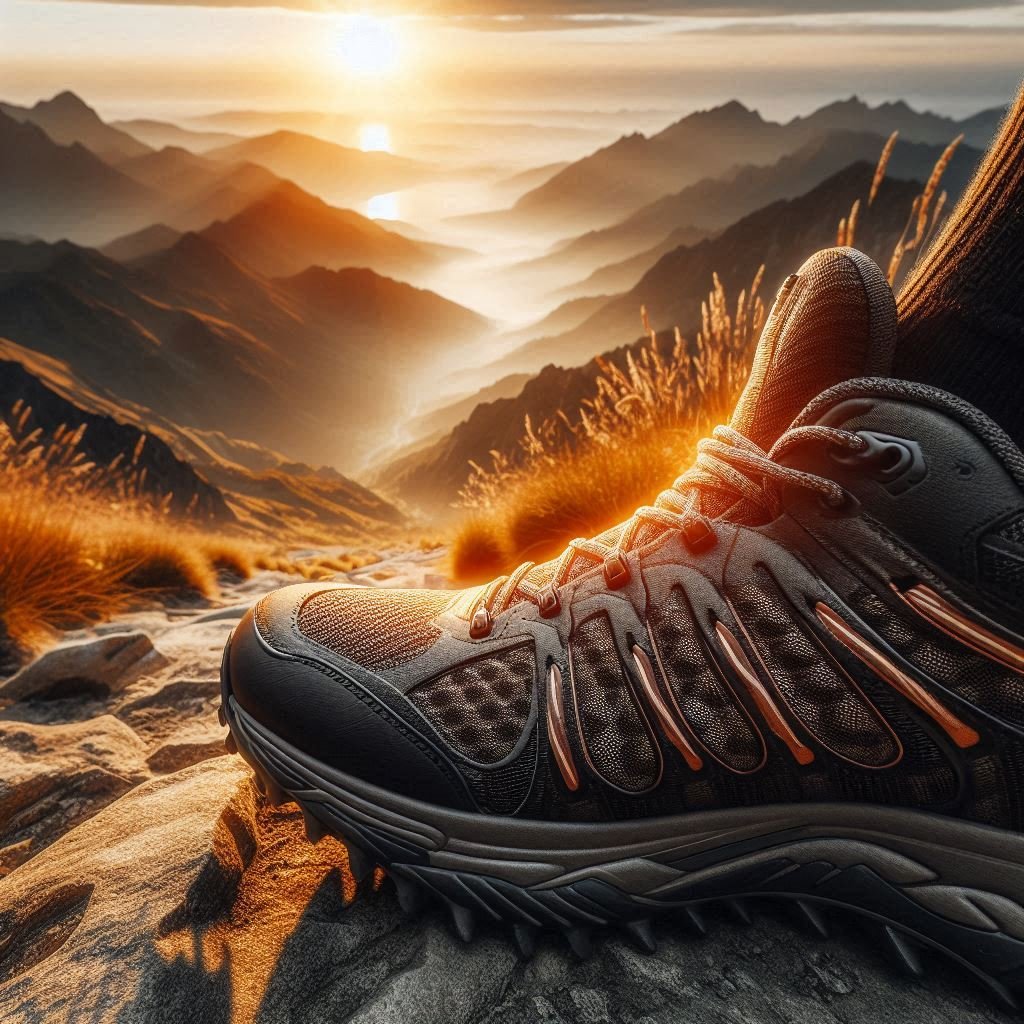
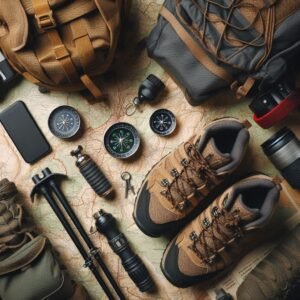

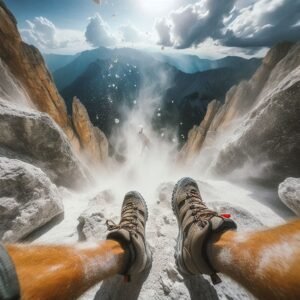
















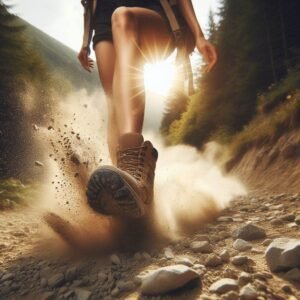

Leave a Reply